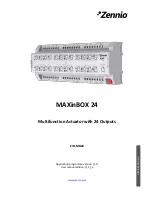Table 22-294. Hardware service request process (continued)
Cycle
Description
With internal peripheral
bus read and internal
SRAM write
With SRAM read and
internal peripheral bus
write
15
16
The fields in the second part of the TCD
n
are written back into
the local memory. This cycle coincides with the next channel
arbitration cycle start.
16
17
The next channel to be activated performs the read of the first
part of its TCD from the local memory. This is equivalent to
Cycle 4 for the first channel's service request.
Assuming zero wait states on the system bus, DMA requests can be processed every 9
cycles. Assuming an average of the access times associated with internal peripheral bus-
to-SRAM (4 cycles) and SRAM-to-internal peripheral bus (5 cycles), DMA requests can
be processed every 11.5 cycles (4 + (4+5)/2 + 3). This is the time from Cycle 4 to Cycle x
+5. The resulting peak request rate, as a function of the system frequency, is shown in the
following table.
Table 22-295. eDMA peak request rate (MReq/sec)
System frequency (MHz)
Request rate
with zero wait states
Request rate
with wait states
66.6
7.4
5.8
83.3
9.2
7.2
100.0
11.1
8.7
133.3
14.8
11.6
150.0
16.6
13.0
A general formula to compute the peak request rate with overlapping requests is:
PEAKreq = freq / [ entry + (1 + read_ws) + (1 + write_ws) + exit ]
where:
Table 22-296. Peak request formula operands
Operand
Description
PEAKreq
Peak request rate
freq
System frequency
entry
Channel startup (4 cycles)
read_ws
Wait states seen during the system bus read data phase
write_ws
Wait states seen during the system bus write data phase
exit
Channel shutdown (3 cycles)
Functional description
K22F Sub-Family Reference Manual , Rev. 3, 7/2014
484
Freescale Semiconductor, Inc.


















